Choosing a milk for toddlers can be such a challenge! So if you worry that your toddler isn’t drinking enough milk, is drinking too much milk, or maybe isn’t drinking the “right” kind of milk, this will help.
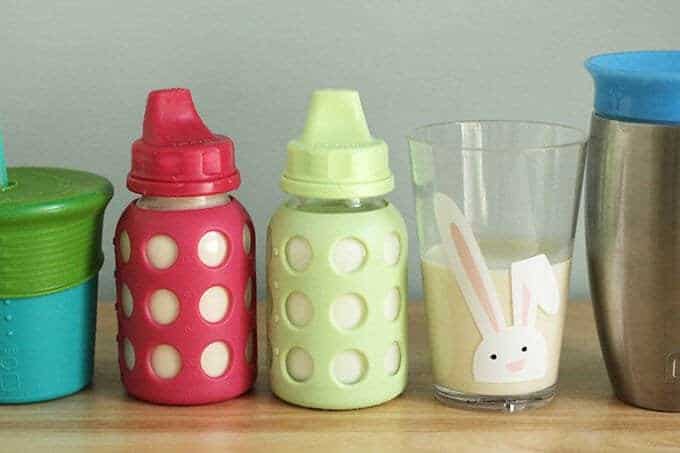
Shopping for milk and choosing milk for a toddler can be such a challenge simply because there are so many options out there—and so many opinions from both health care providers and on the internet. To help take some of the work out of the choice, I’m going to cover grass-fed milk, dairy milk, the most popular nondairy milks, newer pea protein milks, and important facts to help you know which milk is the best milk for toddlers.
Plus, how to know just how much milk your toddler really needs—and signs that they might be drinking too much.
(You may also like Breakfast Ideas for Toddlers, Protein for Kids, Weight Gain Shake, and my Banana Smoothie with Milk as more yummy ideas.)
Table of Contents
- What’s the Best Milk for Toddlers?
- How Much Milk Should My Toddler Drink?
- Best Milk for 1 Year Old Babies and Toddlers
- Frequently Asked Questions
- Best Nondairy Milk Substitutes for Toddlers
- Best Milk for Toddlers with Nut Allergies
- Best Milk for 2 and 3 Year Olds
- Do kids really need to drink milk?
- Good Food Sources of Calcium
- How to Know if It’s Too Much Milk
- Bottomline on Milk for Toddlers
Your toddler won’t eat? Help is here!
Sign up for our email updates to get tips and ideas sent to your inbox.
What’s the Best Milk for Toddlers?
- The American Academy of Pediatrics (AAP) recommends that toddlers drink whole dairy milk since they need the fat for proper development of their brains and nervous systems.
- After a child turns 1, they are better able to digest cow’s milk—which is why cow’s milk is not recommended for babies until their first birthday.
- A study published in 2016 found that full-fat dairy including milk, cheese, and yogurt was protective against type 2 diabetes—meaning that it helped to lower risks of developing the disease.
How Much Milk Should My Toddler Drink?
The AAP recommends that toddlers consume 2-3 servings of milk or other dairy products a day. A toddler serving is ½ cup or 4 ounces. As your toddler grows, that serving size may increase to closer to 1 cup. Check the size of the sippy cup or open cup you use for milk—you may be serving more than you realize since some cups hold 9-12 ounces.
Best Milk for 1 Year Old Babies and Toddlers
Here are a few factors to consider when deciding which milk to transition your baby to when they turn 1 and are a toddler.
- WHOLE MILK
This is the type of milk the AAP recommends that toddlers drink after they turn 1. The brand or type doesn’t matter as much as opting for whole milk.
- GRASS-FED DAIRY
This type of milk may have higher levels of omega 3 fatty acids due to the green grass the cows eat, which may be beneficial to heart health. That said, grass-fed milk is often price prohibitive at 2-3 times the cost of other dairy milk and is not always widely available outside of major metro areas. - ORGANIC MILK
According to the UDSA guidelines: “The USDA organic seal verifies that producers met animal health and welfare standards, did not use antibiotics or growth hormones, used 100% organic feed, and provided animals with access to the outdoors.” The most wildly available milk brands for toddlers include Organic Valley, Horizon, and Stonyfield. Store brands often have competitive prices, so check to see what’s available near you if buying organic is important to you. - LOCAL MILK
Milk made in your area can also be a wonderful option for toddlers, especially since it’s a chance to support local growers.
Cups shown: Lifefactory, GoSili, Munchkin Miracle 360 Cup
Frequently Asked Questions
You may see the label ”vat pasteurized” to reflect that a milk was heated in small batches at a lower temperature for a longer amount of time—and the milk may come with a layer of cream on top that need to be shaken back into the milk. Many find the flavor of this type of milk from a flavor standpoint since it tastes more like fresh, raw milk—but it’s safer than actual raw milk from a food safety perspective. These milks often have shorter shelf lives than ultra-pasteurized milk, so be sure to check the label.
Fairlife, a brand owned by Coca-Cola, is filtered to have more protein and less sugar. Toddlers don’t need extra protein (or to cut carbs) so I wouldn’t go this route unless recommended for a specific reason by your pediatrician.
This is a slightly complicated topic. The hormone rbST can increase the amount of milk a cow can produce by 15% and also decrease the amount of feed they need (which is a good thing as far as food supply and cost to farmers goes). The FDA hasn’t found any proof that there’s harm to human health from drinking milk from cow’s who’ve been given this hormone, but it’s banned from use in Canada. (It’s also produced by Monsanto if that raises red flags for anyone.)
But most milk containers actually say “milk from cows not treated with rbST” in small type towards the middle or bottom of the front or side of the label. You may want to look for this if you buy conventional milk. Organic milk won’t have it per the USDA regulations and many locally made milks from smaller companies won’t have it either.
Sweetened nondairy milks can contain whopping amounts of added sugars. Look for labels that specifically say “unsweetened”. Otherwise, your toddler may get upwards of 15 grams of sugar in a cup (kids under two aren’t supposed to have any added sugars; kids over two are supposed to have 25 grams or less of added sugars). The milk in cow’s milk is naturally present so you don’t need to worry about that.
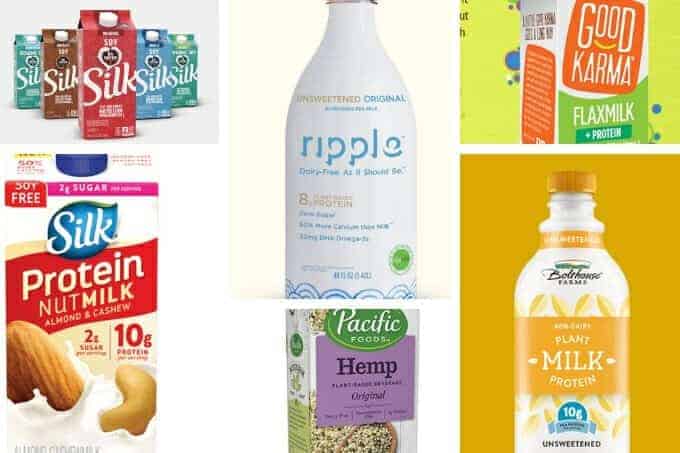
Best Nondairy Milk Substitutes for Toddlers
There are so many plant-based milk options on the market that it can be really hard to know what to buy. Here’s a breakdown of the most widely available and popular ones to help you pick one if your toddler can’t tolerate dairy, or if you just want an option to use in smoothies. And generally speaking, opt for plain, unsweetened nondairy milks to avoid excess added sugars.
- PLANT MILK MADE WITH PEA PROTEIN
Newer plant milks that use pea protein for protein are excellent milks for toddlers. There’s the Silk Protein Nut Milk, which is very affordable (less than $3 a quart, usually) and has a smooth texture and mild flavor. Ripple, while usually a little more expensive, is incredibly creamy and delicious and is an excellent option for kids with nut allergies. Bolthouse Farms also has a newer plant milk option made with pea protein. These options have nutritional profiles that more closely mirrors cow’s milk. - FLAX AND HEMP MILK
Unsweetened flax and hemp milk can also be a good choice since they are naturally full of nutrients as well as beneficial fatty acids. We like the unsweetened plain and vanilla varieties with added protein from Good Karma. Or you can try hemp milk, which naturally has both healthy fats and protein. - SOY MILK
Unsweetened soy milk is also similar to cow’s milk in terms of nutrition and can be a good milk for toddlers who don’t have an issue tolerating soy. (I know that there has been some concern about soy consumption over the years, but if used in moderation like all other foods, it can be a good option.)
The vast majority of nondairy milks, including almond, cashew, and rice, contain little nutrition on their own. Though most are fortified with calcium and vitamin D, few contain any protein or fat. I think of them like water or as a neutral base for smoothies. They are good for hydration, not much of a source of anything else when comparing to cow’s milk.
Best Milk for Toddlers with Nut Allergies
From the nondairy milks above, Ripple, Good Karma, Bolthouse Farms, and soy milks are good options for a toddler with a nut allergy. (Rice milk is also usually nut-free, though it doesn’t have much nutritional value.) These are also great options if you need a nut-free nondairy option to send to daycare or preschool. Be sure to double check labels to confirm that the one you choose is nut-free.
Best Milk for 2 and 3 Year Olds
The AAP recommends that kids over 2 switch to low fat milk—despite research that it might not be the best idea for long-term health goals. A study published in 2013 by the Division of Developmental Pediatrics at the University of Virginia School of Medicine found that kids who drank 1% milk had higher BMIs than those who drank whole or 2% milk. Many studies have also shown that all of us are fuller after eating higher fat dairy products and therefore, may eat less overall.
If you have questions about the type of dairy milk to offer your 2 or 3 year old, bring it up with your pediatrician. (We do whole milk in our house!)
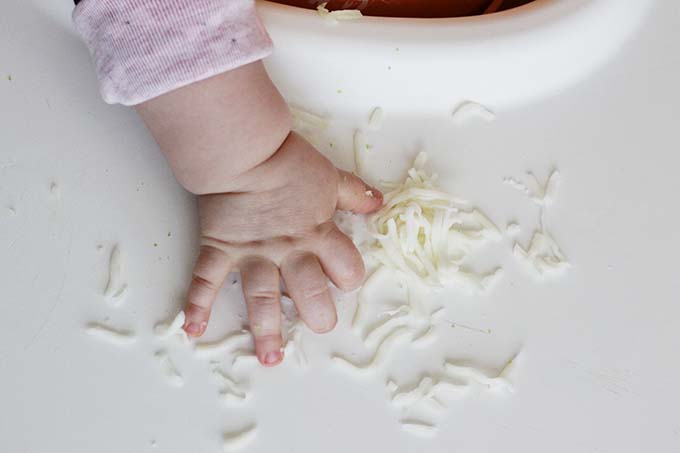
Do kids really need to drink milk?
Nope! Toddlers can get the nutrients from milk in other dairy like cheese, yogurt, and kefir. The goal should be 2-3 servings of dairy per day, which may (or may not) include milk.
Good Food Sources of Calcium
If your kiddo doesn’t like dairy or nondairy milk, cheese or yogurt, try to include these calcium-rich foods for kids.
- CALCIUM
For calcium, good sources are kale, broccoli, bok choy, almonds/almond butter, canned salmon (with bones, so you need to crush them when mixing into salmon salad or patties), sesame seeds/tahini, chia seeds, and tofu. - VITAMIN D
For vitamin D, try salmon, tuna, fortified OJ, egg yolk, and fortified cereal. (Check the labels on breakfast cereals and fortified juices if you go that route to know what you’re getting.)
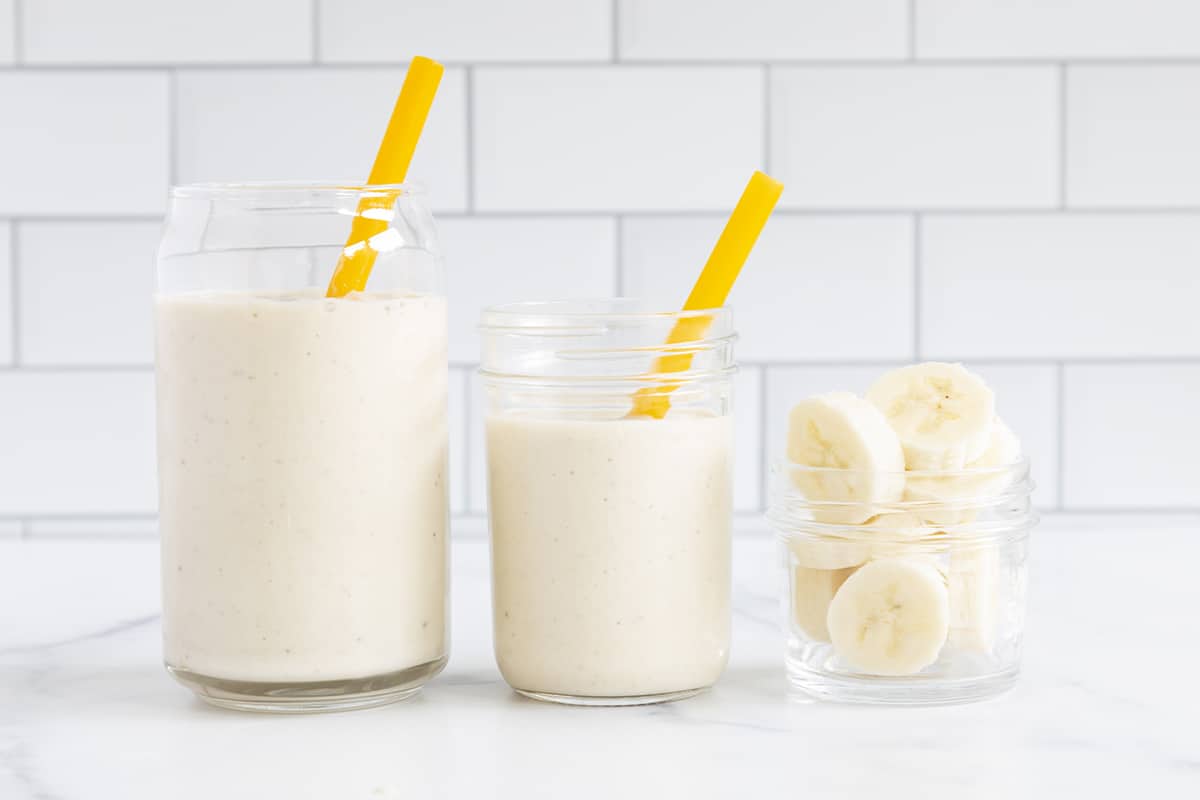
How to Know if It’s Too Much Milk
Milk is often a reason that a toddler won’t be hungry for a meal. Milk is food after all and it can be very filling. A toddler can down 4-8 ounces of milk really quickly, especially when drinking from a sippy cup…and especially if drinking from a sippy cup and doing other things at the same time (walking, watching a screen, etc.).
If your toddler isn’t wanting to eat much food, try cutting down on the amount of milk you offer and how frequently you offer it. A good goal if you suspect milk consumption to be impacting how much food your toddler is eating is to offer milk at meals and water in between.
TIP: Read more about how much milk is best for one year olds.
Bottomline on Milk for Toddlers
- Your toddler should eat a range of dairy products (not just milk) to get lots of nutrition (and probiotics from foods like yogurt and aged cheeses) from their foods.
- If they eat other dairy or don’t like dairy, it’s okay.
- You might want to consider alternating milk and water at meals and snacks throughout the day to ensure that your little one has space in their belly for food.
- If you go with nondairy milk, reach for unsweetened versions when possible to limit added sugars.
- You may also like Banana Milk, Vanilla Milk, Strawberry Milk, Chocolate Milk, and my guide to weaning.
- Learn more about Kids Drinks.
As always, discuss any concerns with your pediatrician. This post is not meant to be a substitute for medical advice.
Related Recipes
I’d love to hear your feedback on this post, so please comment below!
This post was first published on February 22, 2019
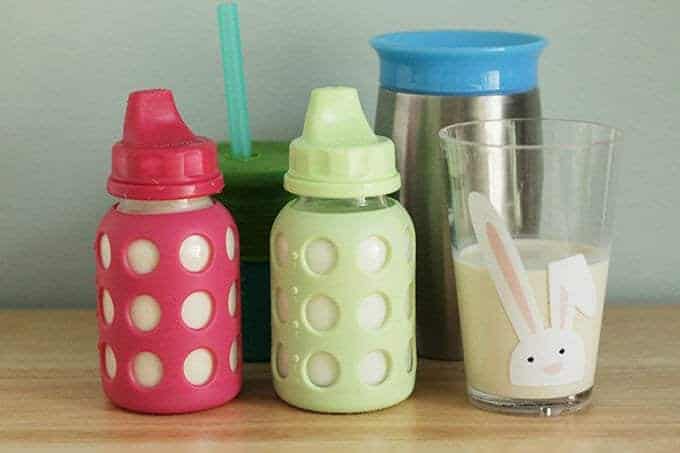
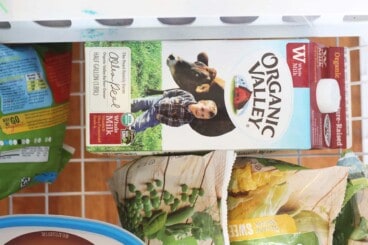
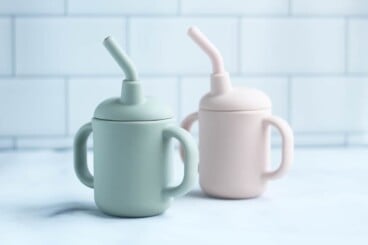
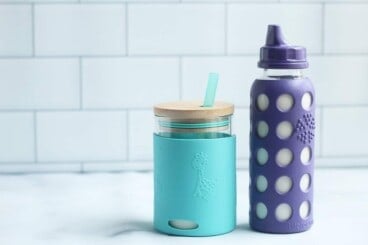
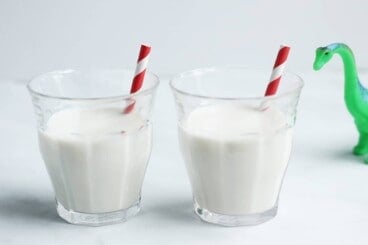
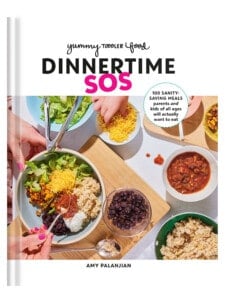
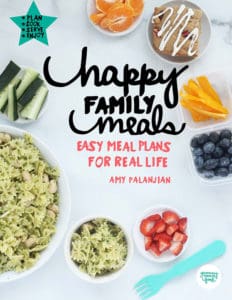
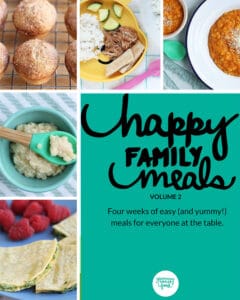
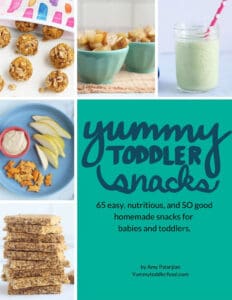




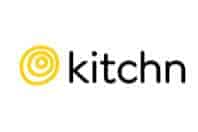




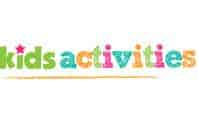

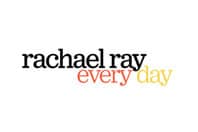
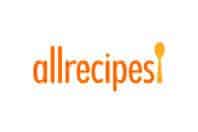

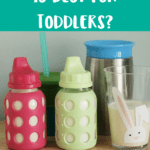
My son has a milk allergy. We’re starting to make the 1yo transition off formula and I’m a bit at a loss! Thank you for adding dairy-free alternative foods to incorporate. I love dairy and I’m really struggling to raise a kid without it. He’s a really good eater, but I worry he’s not going to get enough fat or calcium.
The mixed nut plant milks that have pea protein are a great option that have both fat and calcium (like the ones I mentioned from Ripple and Silk) so I hope they help. And if he doesn’t like them plain, you can always add a ripe banana to make banana milk or use them in smoothies.
Hi Amy! Thanks so much for this, I find your guidance so helpful. My son (22 months) is a big milk fiend and also a very picky eater. We’re trying to cut down milk as I think it affects his appetite. We are only offering it at breakfast and dinner but he often wants more. Last night he had 2 cups (probably 12+ oz) and still asked for more. I’m not sure if I should limit him in those circumstances if I’m following DOR? I’m worried I’ll make milk even more glamorous and desired by limiting how much he can have – but he needs to eat solid food! Any advice or thoughts you have would be so appreciated. Thanks <3
Hi- as far as I understand DOR (and also from a similar experience with one of my kids), it seems okay to limit a specific food if it’s making it difficult for the child to eat any other foods. Also, an excess of milk can impact iron absorption, so it is something we want to keep an eye on. (It’s also okay to limit foods you need to last for another day or if it’s upsetting their stomach, for example. DOR, in practice, is always more nuanced than it is in writing.) We did a 4 ounce cup of milk with dinner for about a year when this started to be an issue and reminded the kiddo that there were other foods on offer AND offered comfort around this time too if/when the milk had been offering that. Typically, this is a phase that kids grow out of as they get a little bit older. You can also ask a few other experts and your pediatrician for their take too if this doesn’t sit right with you.
Thanks so much!! That you take the time to respond to comments is so appreciated!
Very helpful post. Thank you for sharing. My son is 2 years old. I give him milk after his breakfast and after his evening snacks. This helps me make sure he eats his food and he also gets some dairy. He loves milk and when he sees it in my hand he comes running. My only problem is he still likes it only in the feeding bottle!. Do you have any tips to switch to regular cups? That would be very helpful 🙂 Very helpful post. Thank you for sharing. My son is 2 years old. I give him milk after his breakfast and after his evening snacks. This helps me make sure he eats his food and he also gets some dairy. He loves milk and when he sees it in my hand he comes running. My only problem is he still likes it only in the feeding bottle!.
Maybe let him choose a new cup or pick out some paper straws to try? You could also start offering it with the meals you mention (so with breakfast) at the table with the rest of the food to help in the transition. It is a source of comfort for him, so this may take some time.